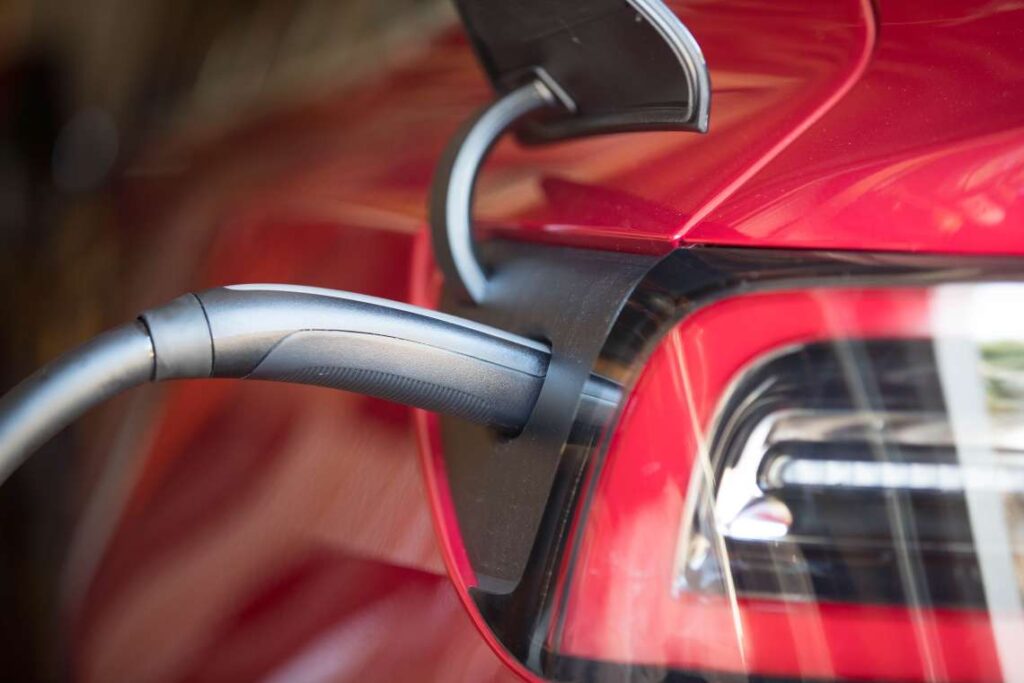If you’ve never driven a Tesla or another electric car before, the idea of having to navigate using a charging station to “refuel” can be intimidating. But never fear, because SIXT is here to walk you through the steps of how to charge a Tesla so you can be back on the road as fast as possible. If you’re using public charging stations you’ll need to have the Tesla app to make an account and enter a form of payment so you can pay for charging sessions.
Note that these charging instructions are for a Tesla Model 3 and Model Y, which we have in our US fleet. Charging at a Tesla supercharger station is slightly different, and you can see the estimated cost and duration of a charging session either at the charging station or in the Tesla app.
In case you’re more of a visual learner, there’s a video rundown of these charging instructions at the end of the article.
- Step 1: Open the charging port
- Step 2: Plug in the charging cable
- Step 3: Check the charging status
- Step 4: Stop charging
Step 1: Open the Charging Port
There are several ways to open a Tesla charge port door. Park your Tesla and leave it unlocked or have your authenticated smartphone handy. You’ll find the charge port on the left side of the Model 3 or Model Y by the rear tail light. Then take the charging cable and press and release the button at the top to open the charge port door. You can also open the door by going to Controls on the touchscreen in the Tesla, then press the Charge Port icon. Or press the bottom of the charge port door when the Tesla is unlocked. Other options include using voice commands, or pressing down the rear trunk button on the Tesla key fob accessory for a couple of seconds.
Once the charge port door is open, you’ll need to plug in a charging cable within a few minutes, or the door will close again.

Step 2: Plug in the Charging Cable
If you’re using a public charging station, look for the right adapter to plug into the Tesla, then connect that adapter to the station’s charging connector. Once the connector is correctly inserted, charging will start automatically after a latch is engaged, the vehicle switches to park if it’s not already, and the battery heats or cools if necessary. If charging doesn’t immediately start, it’s likely due to one of these reasons.
Step 3: Check the charging status
Teslas show different colored lights on the “T” to let you know how charging is progressing. Here is what you might see and what the colors and blinking patterns mean.
- White: The charge port door is open and the vehicle is ready to be charged.
- Blue: A charging connector has been plugged in.
- Blinking blue: The Tesla is either preparing to charge or has been scheduled to charge at a later time.
- Blinking green: Charging is in progress. The frequency of the blinking will slow as the Tesla nears being fully charged.
- Green: Charging is complete.
- Amber: The connector is not fully plugged in. Realign the connector and reinsert it into the charge port.
- Blinking amber: The Tesla is charging, but with a reduced current.
- Red: There is an error and charging has stopped. You can check the Tesla’s touchscreen to see what the error is.
During charging you can look at the top of the car status screen to see how much time is left, the battery charge level, how much range has been gained, driving distance and other information.
Step 4: Stop charging
To stop charging, the Tesla will need to be unlocked or in range of your authenticated phone. Then you can disconnect the charging cable or press “Stop Charging” on the vehicle’s touchscreen.
To disconnect the charging cable, press the button on the adapter handle to release the latch. When you remove the connector from the Tesla, the charge port door will automatically close. Press and hold the button on the adapter handle again to disconnect it from the public charging handle.
Renting a Tesla with SIXT
We offer Tesla Model 3 and Model Y vehicles at select stations in Hawaii and California. At the moment, you can only book a Tesla with a SIXT+ car subscription. This subscription service allows you to have a vehicle on a month-to-month basis, making SIXT+ a flexible option if you want to try out a Tesla or just see what driving an electric car is like.